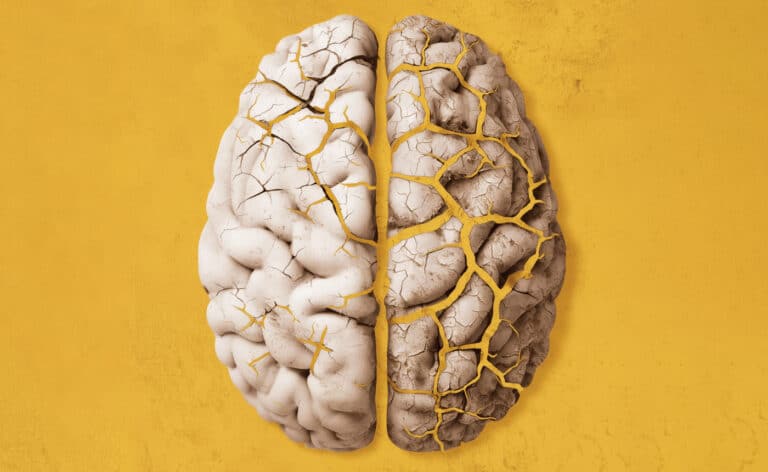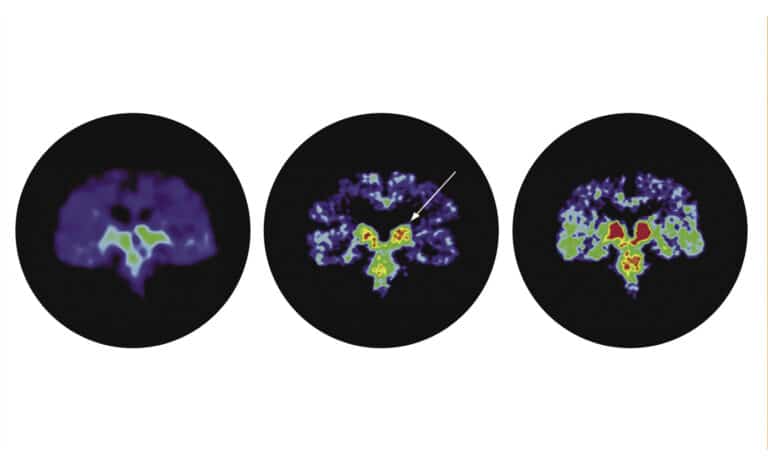New medications are reshaping our view of obesity and health
Fact checked by Derick Wilder
Biology Over Blame
By Catherine Gianaro
For decades, American culture has framed obesity as a failure of willpower. Eat less, move more, cut carbs. But that approach doesn’t work for everyone. Powerful new weight-loss drugs are shifting the conversation — away from blame and toward biology and long-term care.
GLP-1 (glucagon-like peptide-1) medications are reframing obesity not as a personal failing but as a complex condition shaped by genetics, hormones, sleep, stress, and environment.
“We’ve stigmatized patients with obesity,” says Sean Cahill, MD, an internist and pediatrician affiliated with Northwestern Medicine. “But this is about physiology, not laziness. We’re all inherently animals and wired to eat. Our genetics haven’t caught up to our reality.”
GLP-1 receptor agonists first gained approval for type 2 diabetes in 2005. Recent examples include semaglutide, marketed as Ozempic for diabetes and Wegovy for weight loss, and tirzepatide, marketed as Mounjaro and Zepbound. Today, these drugs help people lose an average of 20% of their body weight — results once thought possible only through surgery.
“This is a watershed moment in medicine,” Cahill says. “We’re treating the root cause of many diseases, rather than just treating those issues separately and then addressing obesity.”
GLP-1 drugs mimic incretin hormones, which regulate appetite and blood sugar levels. The result: reduced hunger, smaller portions, and significant weight loss.
A 2021 study in The New England Journal of Medicine found participants taking semaglutide lost nearly 15% of their body weight over 68 weeks, far outperforming those relying on diet and exercise alone. A 2022 study of tirzepatide showed even more dramatic results: up to 20.9% of body weight lost over 72 weeks.
“We’re seeing patients lose 15, 20, even 25% of their body weight,” Cahill says. “These drugs don’t just reduce weight. They improve blood pressure, cholesterol, inflammation, and other metabolic risk factors.”
Quieting the voices
Christiane Shaughnessy lives in Chicago’s Pilsen neighborhood and started using tirzepatide in July 2024 after what she calls “40 years of dieting.”
“You name the diet, you name the fad, I’ve tried it,” she says. “Most of the time with success, but the weight would come back. It always comes back. This was my final attempt to ring in my 50s with a healthier weight.”

Shaughnessy sought help at Options Medical Weight Loss after her primary care physician told her to “simply eat less.”
“I found that staggering. At 5’9” and 251 pounds, your doctor should at least have the conversation,” she says. Since starting tirzepatide, she’s lost 60 pounds and dropped from a size 20 to a 14.
“The biggest difference, apart from the actual weight, is that I have so much mental capacity back,” she says. “The constant, ‘Will this be enough? When can I have my next meal? Do we have chocolate in the house?’ — all those voices in my head are gone.”
The physical changes are noticeable too. “I can now tie my shoelaces more easily. I can do child’s pose without suffo- cating. My towel at the gym finally wraps around me,” she says. “It’s the little things.”
Managing side effects
Like any medication, GLP-1s come with side effects. Nausea, constipation, and fatigue are common, especially during dose escalation. More serious complications such as pancreatitis or gallbladder issues are rare but possible.
For Shaughnessy, the first several months were rough. “I was really nauseous on Fridays after the injection. I couldn’t eat, but I was also very hungry — only bread or a banana would work. I ate Tums by the handful,” she says. “I don’t need them anymore, but that was my life for the first five months.”
Another drawback: Many people regain weight after stopping the drug. “Obesity is a chronic condition,” Cahill says. “Like treating high blood pressure or diabetes, stopping the medication often leads to relapse.”
Muscle loss is another concern. Because patients tend to eat less overall, they risk losing muscle mass unless they maintain a high-protein diet and engage in resistance training. Some clinicians now pair GLP-1 therapy with strength-building programs to offset that risk.
Shaughnessy’s care team warned her about the potential for muscle loss. “They told me to concentrate right now on my fat loss, but to keep lifting so that I keep what muscle I can.” Although she has worked with a coach on strength training, she says she has still lost 10 pounds of muscle mass.
Yet, she has no plans to stop. “I’m very concerned about going off of it,” Shaughnessy says. “If the voices in my head come back, I would like to stay on it forever. Side effects be damned.”
Beyond weight loss
GLP-1 medications do more than lower the number on the scale. They can help reduce blood pressure, improve cholesterol levels, alleviate joint pain, and lower the risk of developing diabetes and cardiovascular disease.
Still, access is a hurdle. While Wegovy is FDA-approved for weight loss, insurers often cover it only for patients with diabetes. Without insurance, monthly costs can exceed $1,500 — too expensive for most people. Some people turn to cheaper, compounded versions from specialized pharmacies, but the Food and Drug Administration does not regulate these.
This raises equity concerns. Obesity disproportionately affects low-income and minority communities, those least able to afford treatment. “If we can prevent diabetes, heart disease, and stroke, the system ultimately saves money,” Cahill says.
Research continues on next-generation weight-loss medications, including drugs targeting three hormone pathways. Early trials suggest even greater weight loss and broader health benefits may be possible. Scientists are also exploring GLP-1s’ potential for treating fatty liver disease, addiction, and cognitive decline.
However, Cahill cautions: GLP-1s aren’t magic. “You can’t medicate your way out of poor habits,” he says. “But you also can’t expect willpower alone to overcome biology.”
Eating Well on GLP-1s
By Victoria Shanta Retelny, RDN, LDN
A recent public health poll reveals that 12% of U.S. adults have used GLP-1 agonists, with 6% currently taking them, based on a nationwide sample of 1,479 adults.
When people take GLP-1s, the brain receives stronger signals of satiety and fullness, which helps reduce cravings for processed, sugary foods. GLP-1s also slow down gastric emptying. Food remains in the stomach longer, helping people feel fuller for greater stretches.
“What I love about this mechanism
is that it’s not about willpower, it’s about biology,” says Sunny Sharma, MD, an internal medicine and lifestyle medicine concierge physician in Hoffman Estates. “These medications can reset the hunger-satiety balance that may have
been disrupted by years of insulin resistance, emotional eating, or metabolic dysfunction.”
As a result, however, people on GLP-1s may unintentionally under-eat due to the lack of regular hunger cues, which can lead to muscle loss and nutrient deficiencies over time.
“I recommend eating small, frequent meals and snacks including adequate protein throughout the day,” says Sheryl Gray, a dietitian at Professional Nutrition Services in Deerfield. Prioritizing high-quality protein and fiber-rich meals and snacks every three to four hours is ideal. She also suggests setting phone alarms or calendar reminders to ensure consistent nourishment throughout the day.
Sharma takes a lifestyle medicine approach with his patients, viewing food as information — not just fuel — for the body. He encourages intentional eating and focusing on nutrient-dense, whole foods. “Think: fiber-rich veggies, legumes, whole grains, nuts, seeds, and plant-based proteins like tofu or tempeh,” he says. “For those following an omnivorous diet, I still recommend prioritizing plants and minimizing ultra-processed foods while making sure they hit their protein targets.”
To get the most nutritional value per bite, balance meals and snacks as follows:
• Protein: 25% of the plate
• Fruits and vegetables: 50%
• High-fiber carbohydrates: 25% — about ½ cup (cooked) per meal
• Healthy fats: two tablespoons of extra-virgin olive oil or avocado oil; of a medium avocado; two tablespoons of flax, hemp, or chia seeds; or ¼ cup of nuts
When used appropriately, GLP-1s can be a powerful tool for weight loss and overall wellness. They create space for more mindful eating, helping reduce emotional eating and allowing for rational, body-fueling food choices.
“When we pair [GLP-1s] with mindful nutrition and movement, that’s where the real transformation happens,” Sharma says. He also recommends incorporating strength training at least twice a week for 15 minutes or more to maintain muscle mass.
And remember: For best results with GLP-1 medication, work with a medical provider and registered dietitian nutritionist who specializes in obesity medicine.
Transitioning Off GLP-1s
By Rebecca Stiles, RD
Like Christiane Shaughnessy, Karen Brandt, of Naperville, speaks highly of her experience with GLP-1 medication. “I have consistently lost weight and have had few side effects,” she says.
Brandt’s story — reduced appetite and rapid weight loss — is common among people who take GLP-1s. But staying on these medications long term is far less typical.

“Recent studies show that over half of GLP-1 users discontinue medication by one year,” says Robert Kushner, MD, a professor of medicine and medical education at Northwestern University Feinberg School of Medicine. “That number increases to 72% by two years.”
Cost is often the primary barrier.
“Cost is definitely a challenge,” Brandt says. “I am paying a lot until I meet my deductible with my insurance.” Coverage varies by insurance plan, and many people must pay out of pocket.
Side effects are another reason people stop taking GLP-1s. Common gastrointestinal symptoms such as nausea, heartburn, constipation, and diarrhea often drive people’s decision to stop.
With many people stopping the medications within a year or two, managing the transition while maintaining weight loss has become a growing research focus.
“Current studies show that sudden discontinuation of a GLP-1 results in an average weight regain of about two-thirds of the weight that was lost,” Kushner says. “But I would not say it is inevitable because there is a great deal of variability.”
Scott Palmer, MD, an internal medicine physician at Rush University Medical Center, has helped patients maintain weight loss after stopping GLP-1s.
“These medications change people’s relationship with food,” he says. “The mental reset is often powerful enough that they can maintain their weight.”
Palmer emphasizes a broader focus on overall health.
“Across the board, you feel better, look better, your mood improves, maybe you get off some other medications, and in some people, their liver, kidney, or heart health may improve,” he says.
“The positive feedback gets them through the initial transition period.”
Both Palmer and Kushner agree on the same approach for stopping GLP-1s: taper slowly. Gradual reduction allows your appetite to return more steadily, giving your body time to adjust.
In addition to tapering the medication, focusing on key lifestyle habits is essential.
Healthy habits
Exercise regularly: Research shows that people who successfully maintain weight continue to engage in high levels of physical activity. Kushner recommends aiming for 200 minutes of moderate to vigorous aerobic exercise per week, such as brisk walking, running, or bicycling, plus strength training at least twice a week.
Control calories: GLP-1s naturally suppress appetite, but once off the medication, you’ll need to manage calories more intentionally. Try:
• Keeping a food log
• Using a calorie-counting app
• Planning meals and prepping food consistently
• Working with a registered dietitian to build a sustainable eating plan
Prioritize fiber and protein: Both activate the body’s natural GLP-1 system. Meals high in protein and fiber send satiety signals to the brain, helping you feel full.
Fiber-rich foods include fruits, vegetables, whole grains, legumes (beans and lentils), and chia seeds. Aim for two to three servings per meal, totaling at least 25 grams per day.
Protein sources such as lean meats, chicken, fish, eggs, low-fat dairy products, tofu, and legumes should be central to each meal. Aim for 20 to 30 grams of protein per meal — roughly 4 oz. of fish, 1 cup of cottage cheese, or three eggs.
Brandt currently plans to stay on GLP-1 medication. “My main concern is gaining the weight back,” she says. “There are many people who have other medical issues that need to be on medication to stay healthy,” she says. “This is something I may have to continue to use to stay healthy.”
As more people start and potentially stop using GLP-1s, healthcare professionals and researchers will continue to find new ways to support long-term weight maintenance. But whether or not someone takes medication, healthy habits remain foundational for success.
Shaughnessy says she’s working on those habits — at least most days. “This is not an easy fix,” she says. “It’s not for the faint of heart. It’s for people who are at the end of their rope. But boy, it’s worth it if you’ve tried everything else.”
Revolution or Risk?
How weight-loss drugs may be fueling eating disorders
The rise of GLP-1 medications — hailed as revolutionary tools for weight loss — may be fueling a troubling trend: the onset or worsening of eating disorders.
Maryrose Bauschka, MD, medical director at the Eating Recovery Center, says she’s seeing a measurable uptick in both new cases and relapses since weight-loss drugs like Wegovy and Zepbound entered the mainstream.
“If someone is vulnerable but hasn’t necessarily manifested an eating disorder earlier in life, these medications can be a trigger,” she says.
The concern stems from how GLP-1 receptor agonists work. By slowing gastric emptying and suppressing appetite, the medications help people feel full sooner and stay full longer — an advantage for weight loss, but one that also can foster restrictive eating patterns. Prolonged appetite suppression, Bauschka says, can lead to malnutrition, nutrient deficiencies, and, for those predisposed, the onset or exacerbation of restrictive eating disorders like anorexia nervosa.
“Some individuals are using these medications to help them restrict nutrient intake so they can lose more weight faster,” she says. “For those with an existing eating disorder, it’s like pouring gasoline on the fire.”
The ease of access compounds her concern. Bauschka describes patients in active treatment for anorexia who have obtained prescriptions from online telehealth platforms without adequate screening for eating disorders. “We don’t routinely screen for eating disorders in many medical settings, and most doctors get minimal training on them,” she says. “That combination means people are slipping through the cracks.”
While some clinical research and case reports suggest GLP-1s may help treat binge-eating disorder and bulimia nervosa, Bauschka says researchers and clinicians don’t yet have enough “experience with these medications to truly understand the possible benefits and potential harms.”
From late 2023 through July 2025, the Eating Recovery Center admitted 48 patients using GLP-1 medications for reasons other than type 2 diabetes, including a 14-year-old. “We’re talking about powerful medications that are already being prescribed to children,” she says.
Bauschka’s broader worry goes beyond individual cases. She believes the popularity of GLP-1s reinforces harmful cultural messages about weight and worth. “These drugs can fuel the myth that weight is a choice and that our size is a disorder that needs to be ‘corrected,’” she says. “For vulnerable populations — especially young people — that’s a dangerous message.”
—Catherine Gianaro














